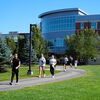Processing Your Payment
Please do not leave this page until complete. This can take a few moments.
-
News
-
Editions
-
- Lists
-
Viewpoints
-
Our Events
-
Event Info
- On The Road with Mainebiz in Gorham
- On The Road with Mainebiz in Wells
- Business Leaders of the Year Reception 2025
- Women's Leadership Forum 2025
- On the Road with Mainebiz in Bethel
- Health Care Forum 2025
- On The Road with Mainebiz in Greenville
- On The Road with Mainebiz in Waterville
- Small Business Forum 2025
- On The Road with Mainebiz in Bath
- 60 Ideas in 60 Minutes Portland 2025
- On The Road with Mainebiz in Lewiston / Auburn
- 60 Ideas in 60 Minutes Bangor 2025
-
-
Calendar
-
Biz Marketplace
- News
-
Editions
View Digital Editions
Biweekly Issues
- Feb. 10, 2025
- Jan. 13, 2025
- Dec. 16, 2024
- Dec. 2, 2024
- November 18, 2024
- November 4, 2024
- + More
- October 21, 2024
- October 7, 2024
- September 16, 2024
- September 2, 2024
- August 19, 2024
- August 5, 2024
- Lists
- Viewpoints
- Our Events
- Calendar
- Biz Marketplace
Special Editions
Carrying a torch for Connies | A project to restore a vintage aircraft in Auburn propels economic development
The once regal Constellation Starliner, a 1950s legend in the aircraft world, appears like an oversized model in its oversized hangar at the Auburn-Lewiston Municipal Airport.
The plane, one of the last of its kind, rests on wooden risers in the center of the hangar. It’s been stripped bare, leaving only a metal shell. Lines of green primer covering seams and rivet rows between the aluminum panels creates a patchwork pattern on its hull. Its engines are gone. Its landing gear carted off. Its entire tail removed.
Story continued after this audio slideshow
The plane is not, however, destined for scrap metal. On the contrary, the near complete dismantling of the plane is the first step in a total restoration to its former glory, when it was the last, great prop-engine passenger plane to carry people across the Atlantic Ocean before the jet engine stole the spotlight.
Lockheed Martin built 44 L-1649A Constellation Starliners, affectionately called “Connies” by admirers, at its facility in Burbank, Calif., in the late 1950s. Only four survive. For nearly 30 years, two of those four remaining Connies sat outside the regional airport in Auburn, until they were purchased at a bankruptcy auction in December 2007 by Deutsche Lufthansa AG. A third Connie in Florida was also part of the sale.
Lufthansa Technik, a subsidiary of the Cologne, Germany-based airline, will spend two years restoring one of the planes to airworthiness, cannibalizing the others for spare parts. Lufthansa, which flew the plane on its first international flights following World War II, plans to tour air shows with the refurbished plane, and sell tickets to vintage aircraft addicts willing to pay a premium to become a passenger of the sole airworthy Connie. The proceeds are intended for its charitable foundation, Deutsche Lufthansa Berlin-Stiftung.
The project brings one of the world’s largest airlines into the community, where it will have a sizable economic impact as it subcontracts with local companies, provides more than a dozen jobs to local aircraft technicians and mechanics, and leaves a 27,000-square-foot hangar for future uses.
The Lewiston-Auburn Economic Growth Council awarded an economic achievement award to Lufthansa Technik in May. “Just having an entity like Lufthansa come and make this investment and have them as a tenant, which created the hangar infrastructure at the airport, is going to serve us long term,” says Roland Miller, economic development director in Auburn.
Recreating an era
Where there were once plush passenger seats, a lounge serving draft beer and even sleeperettes, the inside of the Connie is now a hollow tube, its metal skeleton exposed.
Michael Austermeier, Lufthansa Technik’s manager on the project, steps along boards lain over metal bracings to create a temporary floor in the plane. He walks into the plane’s cockpit, which is also stripped bare. A docked iPod in the corner plays “Chiquitita” by Abba.
Unlike the rest of the plane, which will be restored to 1950s vintage, the cockpit will be fitted with modern gadgetry to allow the plane to be certified airworthy. Austermeier estimates the avionics of the project alone will take 18,000 man hours.
When he looks around the plane and its guts neatly strewn along the periphery of the hangar, he is still amazed by what people were capable of building in the 1950s. Just before entering the plane, Austermeier had stood over several pallets holding avionics equipment. “The computing power of this stuff today is this size,” Austermeier says, holding up his iPhone.
Everything in the plane, from the fire extinguishers to the flaps, was manually operated and rigged mechanically with cables. Today, planes’ hydraulics and avionics are operated by computers. “We should be proud of our grandfathers who built this,” Austermeier says.
Those hypothetical grandfathers are also a valuable resource for Austermeier. Lufthansa has hired several former engineers out of retirement. They’re in their 70s and worked on Lufthansa’s Connies when they were apprentices in the early 1960s. But one has had a stroke since the project started, and Austermeier’s voice hints of urgency when he says, “We’re working against time. We need to make sure the know-how is passed on to the next generation.”
Austermeier arrived in Maine from Germany in April 2008 to begin the restoration project. He and his wife arrived with four pieces of luggage and a mission from Austermeier’s boss: “Make it affordable and don’t compromise quality,” he recalls.
The project is a no-frills affair. Austermeier’s office is a trailer inside the airplane hangar, outfitted with cheap office furniture from the local big-box store. The project’s recent economic development achievement award hangs on the faux wood-paneled wall. Through one window, the stripped-down plane is visible.
The guts of the plane and pieces of its skeleton have all been tagged and cataloged. Some of the 30,000 parts in the project’s database are unsalvageable, some will be repaired, but they’ll hold onto all of them for now. Lufthansa also bought 100,000 pages of manuals that are invaluable, even though they’re incomplete.
Austermeier won’t disclose the project’s budget, but says it will cost in the “millions of dollars.” Much of that will be spent in the local economy. “We buy everything we can in the neighborhood,” he says. “It’s a win-win situation for everyone here.”
Lufthansa hired about a dozen people from the area. Kevin Brown, a mechanic who worked for Maine Aviation in Portland before being hired by Lufthansa Technik, calls the job “a once in a lifetime” opportunity. “This is one of those things you top a career with,” he says.
Lufthansa Technik is subcontracting work to local businesses, such as Ben Alpren Machine Tool & Supply Co. in Lewiston for tools, and Quality Assurance Labs in South Portland, which will test all the plane’s parts for cracks, corrosion and general wear and tear. “[Austermeier] is trying to spend all his pennies here,” Brown says.
Austermeier estimates the crew is 25% of the way through the restoration process. He hopes to finish the project by the end of 2010, with the flight tests and certification procedures taking place in the spring of 2011. “In a project like this, where you have to recreate the wheel, it’s hard to come up with a project schedule,” Austermeier says.
When it’s complete, the Connie will be flown to Germany, leaving a massive hangar that the airport can market for aircraft maintenance or refurbishing. Rick Cloutier, the airport manager, says the hangar is a state-of-the-art facility and, with the capacity to hold a Boeing 737, the largest hangar in central Maine. The airport rewrote its master plan in 2005, which calls for expanding its runway by 2013 and attracting passenger service. “So we’re looking at a lot of opportunities here over the next few years with the runway expansion and the hangar,” Cloutier says. “All the things are working out very well together.”
Miller, Auburn’s economic development guru, hopes the aircraft company will use the hangar for other restoration projects it considers in the United States. “There’s no reason at all a facility exactly like ours isn’t perfect for them to undertake another project,” Miller says. “A company like Lufthansa is always doing long-term planning and we hope we are part of those plans.”
Whit Richardson, Mainebiz new media editor, can be reached at wrichardson@mainebiz.biz.










Comments